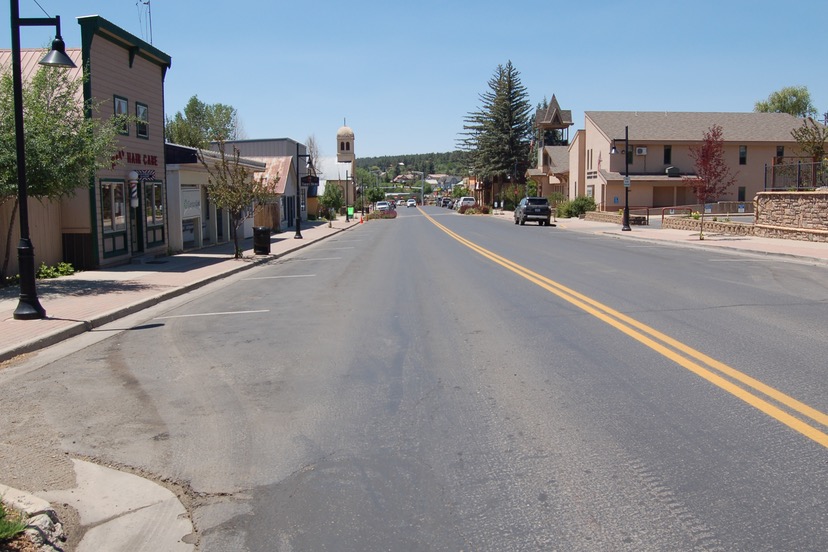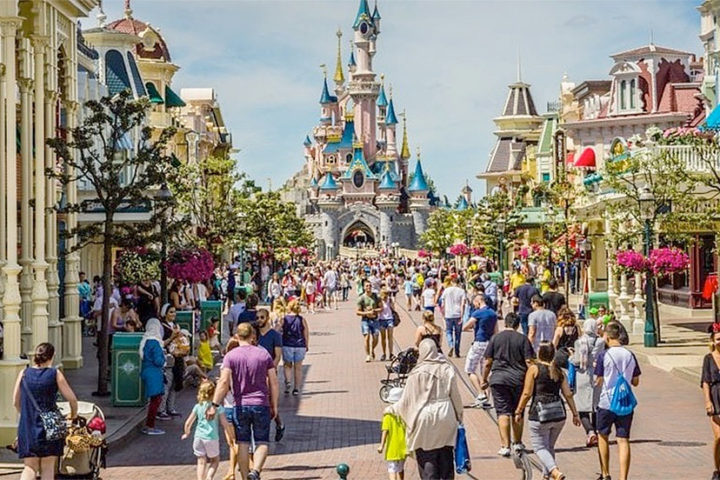As a Main Street America™ Coordinating Program, Colorado Main Street helps to lead a powerful, grassroots network of over 40 Coordinating Programs and over 1,200 neighborhoods and communities across the country committed to creating high-quality places and to building stronger communities through preservation-based economic development…
— from the Colorado Department of Local Affairs website.
A group of local activist volunteers gathered at the Ross Aragon Community Center last week, for a couple of days, with the goal of creating a “Main Street Advisory Board”.
Many Colorado cities and towns have a “Main Street”, which served — many years ago — the community’s “main street”. In some towns, the ‘main street’ is still the main street. But not everywhere.
The national, trademarked program known as Main Street America™ has the ambitious goal of revitalizing historical main street districts that have lost their economic energy and importance over the past half-century or so.
Pagosa Springs might have one of those revitalized historical main street districts someday, in the not too distant future, if Pagosa Springs’ municipal government has anything to say about it.
Pagosa Springs has a main street… or at least, a ‘main street by any other name’. The street is also known as U.S. Highway 160, which barrels through the historic downtown district, allowing cars and trucks to pass through, heading east or west… basically following the San Juan River from the east end, until the two currents part ways at South 6th Street, with the river heading due south, and the highway heading west.
The character of the main street — or rather, the character of the buildings facing the main street — changes as Highway 160 heads west up Put Hill. (Pronounced “Putt Hill”) The flanking neighborhood becomes progressively more ‘suburban’ in appearance. Some undeveloped properties. Some auto repair shops. A couple of marijuana dispensaries. A combination restaurant-bar-mini-golf venue. A couple of tire repair shops. A Sonic drive-in. A Speedway gas-station-convenience-store. A golf course. A Walmart.
But our focus, for now, is not west of downtown — where about 80% of the community lives — but rather “Main Street”.
The photo at the top of this article shows Lewis Street, which is not Pagosa’s ‘main street’. But it’s a good example of what has happened to many, once-thriving downtown districts.
Back in the 1970s, some American cities and towns were slowly dying as people fled downtown to buy their 1/4-acre dream property in the suburbs. This flight from downtown was encouraged by federal and state housing policies aimed at the idea that every nuclear family ought to live in a separate nuclear house, ideally with a lawn in the front yard and a swimming pool — or at least a swing set — in the back yard. And two cars in the driveway. And a shopping mall within easy driving distance.
In other words, every family ought to live in the suburbs.
As a result, many historical downtown districts found themselves struggling, economically and socially. Downtown business districts began to falter, as shops and offices closed their doors, and as downtown buildings fell into disrepair.
This was concerning to ‘historic preservationists’ and especially, perhaps, to the federally-chartered National Trust for Historic Preservation. One approach to try and revitalize struggling downtowns was to demolish older buildings and replace them with parking lots. But the new parking lots didn’t really help matters, because what the downtown districts needed was attractive activities — shopping, theater, concerts, athletic events, parks — not ugly parking lots.
So the National Trust looked for a revitalization model that worked. Their main goal being, of course, historic preservation. But you can’t easily afford to preserve a building when it’s perpetually vacant and generating no income.
Downtown districts have traditionally been centers of commerce and social interaction, which are seen as good things. Often, the downtown reflects the unique history of a community, in a way the suburbs fail to do. The revitalization of a failed downtown district can also be environmentally friendly, because existing buildings and infrastructure get ‘recycled’.
And tourists like to visit quaint, old-fashioned downtown districts, as was proved many years ago by Walt Disney. It helps, if there’s a 60-foot castle at the end of the street.
Out of these concerns came the National Trust’s ‘Main Street Program’, beginning in 1980. The program is administered here in Colorado by the Department of Local Affairs, affectionately known as ‘DOLA”.
Theoretically, the program is focused on ‘historical preservation’… basically, taking the existing assets of your downtown and improving them somehow, without significantly changing the district’s overall architectural character. The goals is not to tear down the marginally-functional buildings and construct new, more functional buildings, but rather, to give an existing downtown a face-lift.
A shot of Botox, you might say.
From the DOLA website:
The Colorado Main Street Program helps communities build local capacity toward downtown revitalization. Each local program sets a vision for its community and consistently works toward achieving that vision. Colorado Main Street staff provides technical assistance, training, and small financial grants to help communities work toward these prerequisites and requirements.
According to the map on the DOLA website, only eight Colorado communities have so far have met the “prerequisites and requirements” necessary to be designated as a ‘Graduate’ of the Main Street Program. To graduate, you first need to become a ‘Candidate’ and then you need to be ‘Designated’, and finally, at the end, you get your diploma.
About four dozen Colorado towns are signed on as ‘Affiliate’ members of the program.
The Town of Pagosa Springs has been, for many years, an Affiliate member of Colorado Main Street Program. It’s easy for a town to join as an Affiliate; you simply send DOLA a letter expressing your interest. No obligation; nothing to buy. But the perks are also limited.
Meanwhile, the Town has presumably been getting the newsletters and updates about the ‘Official Main Street Communities’ that benefit from the full range of grants and technical assistance provided by DOLA. But the Town staff has been too busy with other projects to complete the steps necessary to become a full-fledged ‘Official Main Street Community’.
Until now?
Recently, the Town contracted with the Pagosa Springs Community Development Corporation (PSCDC) to coordinate an effort to become a ‘Graduate’ Colorado Main Street community. First step: to create a Main Street Advisory Board. Second step: get the Board to agree on what downtown Pagosa Springs needs most, to become more like Walt Disney’s vision of Main Street.
Is a shot of Botox really what our town needs?
That seems to be the assumption.


